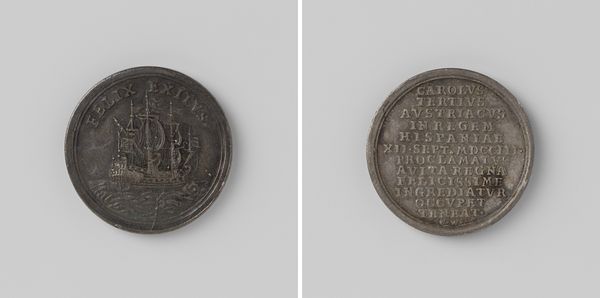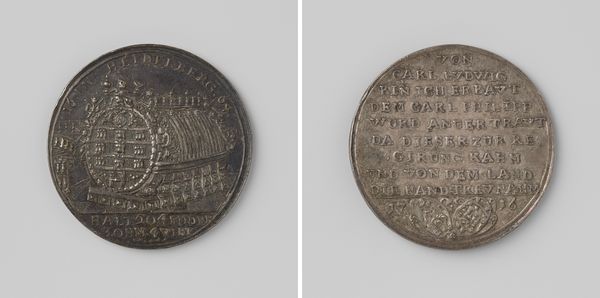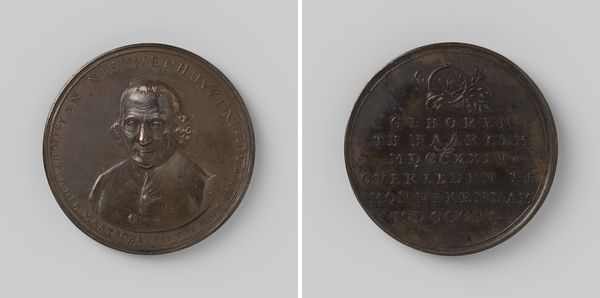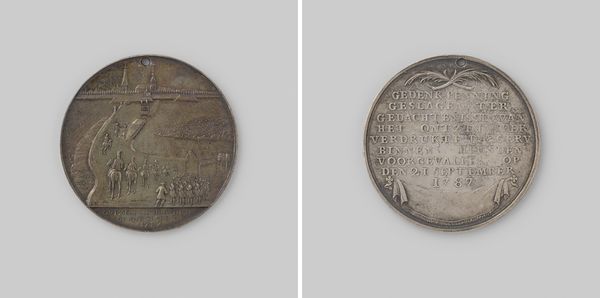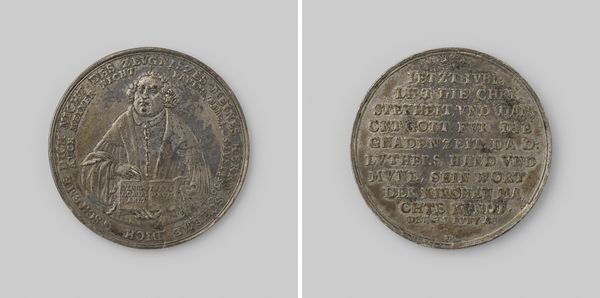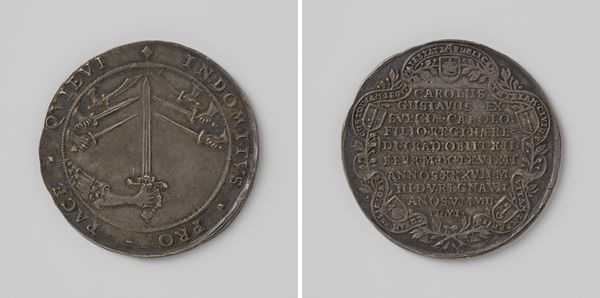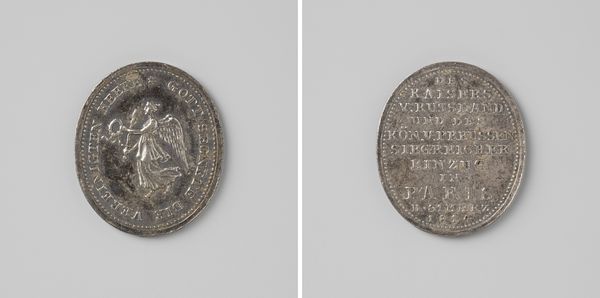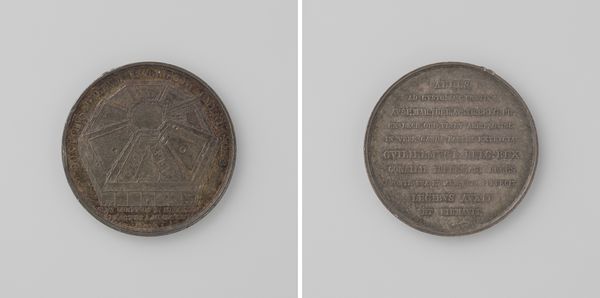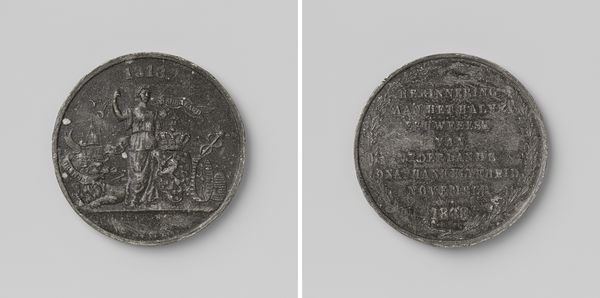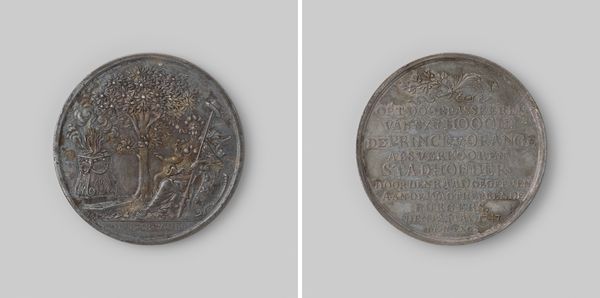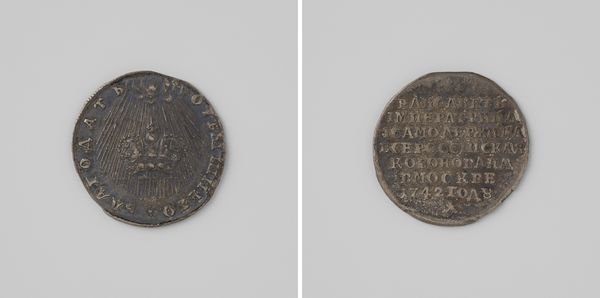
Intocht van Leopold I en Louise Maria, koning en koningin der Belgen te Brussel 1832
0:00
0:00
laurentjosephhart
Rijksmuseum
print, metal, relief, sculpture
#
neoclacissism
# print
#
metal
#
sculpture
#
relief
#
sculpture
#
history-painting
Dimensions: diameter 2.7 cm, weight 7.25 gr
Copyright: Rijks Museum: Open Domain
Curator: Here we have a medal, "Intocht van Leopold I en Louise Maria, koning en koningin der Belgen te Brussel," or "The Entrance of Leopold I and Louise Maria, King and Queen of the Belgians into Brussels." It was created in 1832 by Laurent Joseph Hart and is now held in the Rijksmuseum. Editor: My first impression is somber. Despite being a commemorative piece, the dark metal and worn details lend it a gravity that transcends celebration. There's a real weight to it. Curator: Absolutely. It’s crafted from metal, meant to be lasting, to shape collective memory. It depicts a specific event, the ceremonial entrance of the new monarchs into Brussels after the Belgian Revolution. Editor: It makes you think about how power is projected and received. These events aren’t just spontaneous outpourings of support. They’re carefully orchestrated performances intended to solidify authority and influence public perception. Curator: Precisely. The medal acts as propaganda, imprinting a specific narrative onto the public consciousness. This medal serves to communicate that Leopold I’s reign was perceived and crafted by Belgium's high society as ordained and proper. Editor: Given the sociopolitical environment of the time, with Belgium newly independent, it’s easy to see how this fits into constructing a national identity and promoting monarchical legitimacy. Who were the audiences for pieces like this, and how were they received? Curator: These medals would be distributed among the political and economic elites, and sometimes to common people as a kind of state gift or reward. Editor: It brings a more cynical question to the front for me. How do objects like this conceal social and economic inequalities while constructing a sense of shared national identity? What voices were excluded from the narrative enshrined in the relief and the history that followed? Curator: A poignant point. It's a reminder to always examine historical narratives critically, acknowledging the complexities and omissions within these symbols of power. Editor: It’s fascinating how much a small object like this can reveal about the grand narratives of nationhood, power, and collective memory. Thanks for shedding light on this complex little thing. Curator: My pleasure.
Comments
No comments
Be the first to comment and join the conversation on the ultimate creative platform.

